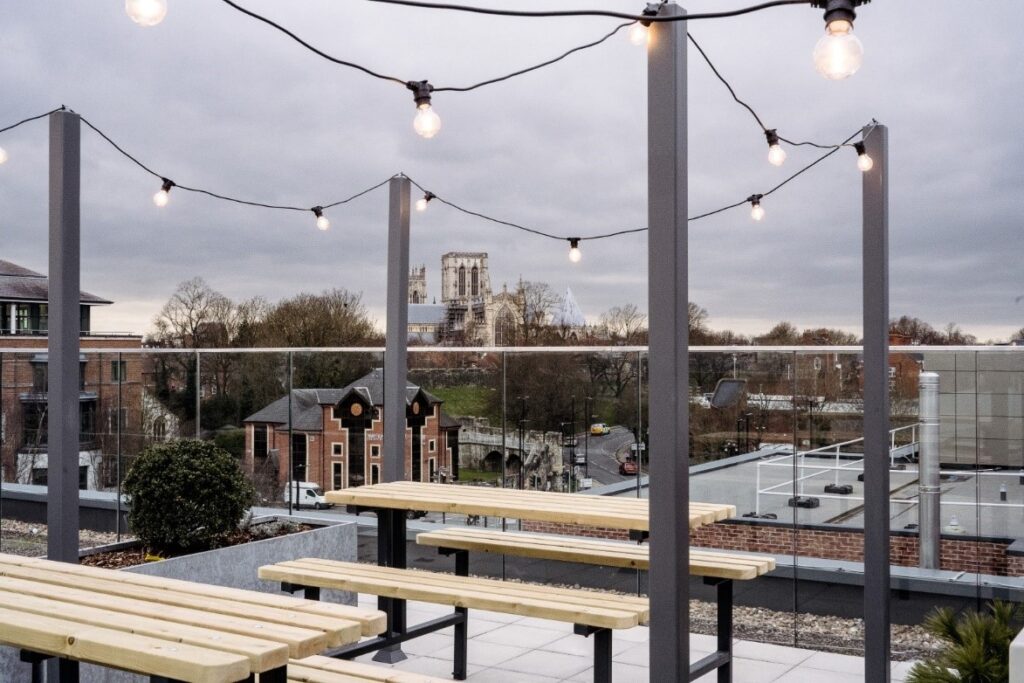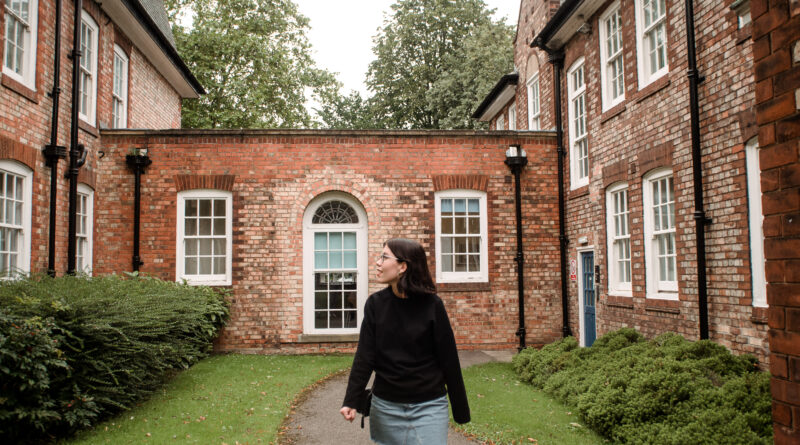Transport links, cycle routes and walking trails
Living in York as a student comes with the benefits of having access to a variety of transport links which can take you across the city and beyond. This means that you are able to explore York and the region of North Yorkshire, and also travel further to key cities within the UK via train routes, such as Edinburgh, Manchester and London. So in this blog, we share with you some key transport links, cycle routes and walking trails.

Here are our top places to keep up to date with all things travel in York:
- ITravelYork page: perfect for staying up to date with travel related news and services in York – https://www.itravelyork.info/
- First Bus York: many of the bus services within York are operated by First Bus, who offer a day tick as cheap as £4.30 – https://www.firstbus.co.uk/york
York has lots of walking trails so you can get to know the city from all angles. Here’s some of our favourites:
- Cat trail: https://www.visityork.org/explore/york-cat-trail-p801381
- Selfie trail: https://www.visityork.org/explore/selfie
- Cycle the solar system: https://astrocampus.york.ac.uk/cycle-the-solar-system/
- Walk along the York walls: https://www.yorkwalls.org.uk/?page_id=3690
- Historical trails: http://www.historyofyork.org.uk/trails
Cycle routes in the city
Cycle route: Orbital Route 66
A good place to start finding your way around local areas is to head for the chimney on Foss Islands Road. Cross through the carpark on to James Street. On the other side of the road, you will see a sign posted entrance. This takes you on to a vehicle free path and cycle way.
- Did you know: The chimney was built in 1899 and was part of an incinerator for waste known as the DESTRUCTOR, cinders were used to make footpaths around York.
- Did you know: The route was originally a railway line that opened in 1880 used for freight and Rowntree workers.
As you set off turn left at the first junction and follow the pathway, which will take you back on to James Street. Cross the road and you will be on to the main pathway.
As you make your way look out for unusual art work of blue metal pipes which were designed by the artist https://www.georgecutts.com/
As you travel along you will pass under several bridges, all with different designs. There are also various entrance and exit points for you to get to know the areas.
The next big feature is the iron bridge that crosses over the river Foss.
- Did you know: On the right is the King George V field, protected on his death as a memorial
As you cross the bridge on the left you will see some new build houses that were built on an old milk dairy, there is a small part left partly hidden by brambles
- Did you know: Milk was delivered daily by milk floats in glass pint bottles on electric floats.
If you now look to the left, you will see a small communal garden planted with fruit trees and a seated area if you need a rest.
The nearby exit leads you on to a terraced street area built around the 1900s.
As we travel around the bend the old Rowntree chocolate factory, comes in to view.
- Did you know: At its peak 14,000 workers were employed here, there was also a subway for people to cross the road to the canteen.
Further along if we look hard, we will see what remains of a small station called Rowntree’s Halt. Used by workers who travelled from South Yorkshire.
- Did you know: Rowntree’s had its own railway and train engines in the factory grounds.
After the old station we turn right and follow the cycle path along Wigginton Road and join the track again that leads to New Earswick.
Crossing the junction leads on to the path that finds its way to New Earswick, a small village just outside York. On the way you will pass through shrub land and fields, crossing cattle grids all the way to the end of the path. Here you can turn around to stay off the roads or you could follow the signs and go to Haxby and beyond.
For our trip we are going to follow the signs for Haxby until we reach the main road and then turn right and head back to York. As you make your way through New Earswick, you will notice a change to a different kind of architecture. This part of the village was built by Rowntree’s for its factory workers to enjoy a modern way of living with a bathroom and garden.
- Did you know: The first houses were built in 1901, each garden was planted with fruit trees. The houses were available for anyone who worked with their hands or minds.
Going past the shops you will come to a roundabout on the outskirts of New Earswick, carry on straight through and you will eventually pass the sports centre and then back into York. As you reach the bridge you could go back on to the cycle track.
Cycle route: Orbital Route Right
We will start off at the entrance opposite the large chimney, but this time turn right at the first junction.
As we travel down the path on the right is a beck called Tang Hall beck. At the start of the journey was where the beck met with Osbaldwick beck.
- Did you know: Tang is a Saxon word meaning the meeting of two becks, Hall comes from an old large house that ran as a pub until being demolished in the 1970s.
Continuing on we next come to an entrance for St Nicholas Fields. St Nicks is a centre for nature and green living covering 24 acres, planting started in the mid 1990’s and it is now a great place for picnics and nature spotting in the heart of York, with opportunities for volunteering. https://stnicks.org.uk/
- Did you know: St Nicks Fields was a land fill area, that now has a recycling service for the local community.
Traveling on we pass through the suburb of Tang Hall, until we come to Tang Hall bridge.
- Did you know: L.S. Lowry painted a scene of York from here.
Travelling under the bridge we start to approach an area called Derwenthorpe, that is less than ten years old and soon we come to the end of the path way.
- Did you know: the line continued to Cliff Common and then with a connection to Selby.
You could turn around and stay away from the traffic or you could be more adventurous and turn right which takes us to the village of Osbaldwick, with a population of around 3,000. At the heart of the village is the 12th century church of St Thomases.
Following the road over the bridge we come on to Osbaldwick Lane. Carrying on over Tang Hall Lane on to Millfield Lane and then Millfield Avenue, were we reach Hull Road Park.
On entering the park, we cross over Osbaldwick Beck.
The park has many amenities including tennis, basketball and football courts to hire as well as opportunities to volunteer.
Leaving the park, crossing over the road we come to a different entrance to St Nicks Field.
Whilst exploring the area, look out for the standing stones area, a great place to have a rest.
- Did you know: the stones are reclaimed old church stones and were erected to form an open air theatre.
Leaving the fields, we come back on to the path we started on, turning left we then arrive back to the starting point of our journey.
Bike Storage
There is bike storage at every accommodation site so you’re very welcome to bring your bicycle to university. Please note that the University Managed Houses will vary but once you’ve been offered accommodation, you may email us to check if the house has suitable storage.
If you do bring a bike, you must use the allocated cycle storage and not store it inside your accommodation. We recommend bringing a quality bike lock to keep it secure and you should check if it would be covered under your insurance. However, our sites are very safe, and we do have a 24-hour Security Team.
Cycling is a very efficient and eco-friendly way of travelling across the city. If you’d like to ride your bike to lectures, then you’re welcome to. The university has over 300 bike racks located across the campus offering both open and closed facilities.
To find out more information about transportation in York, read Leah’s blog on tips and tricks for getting around York.

